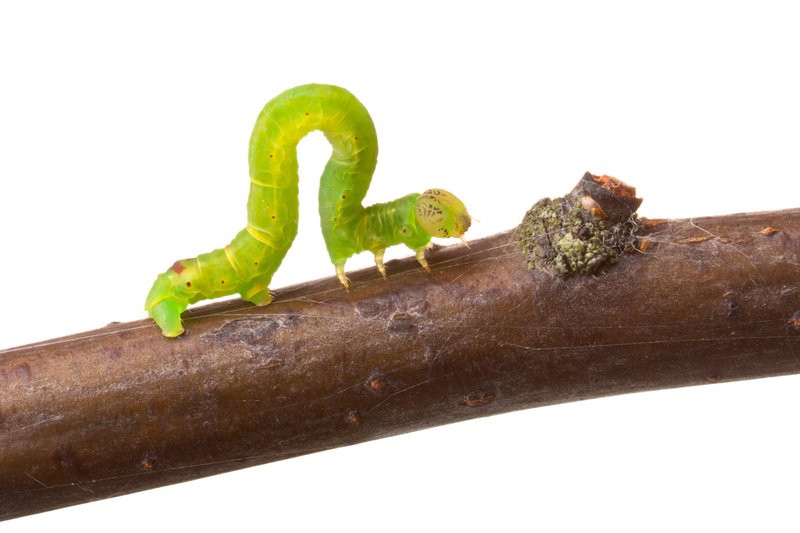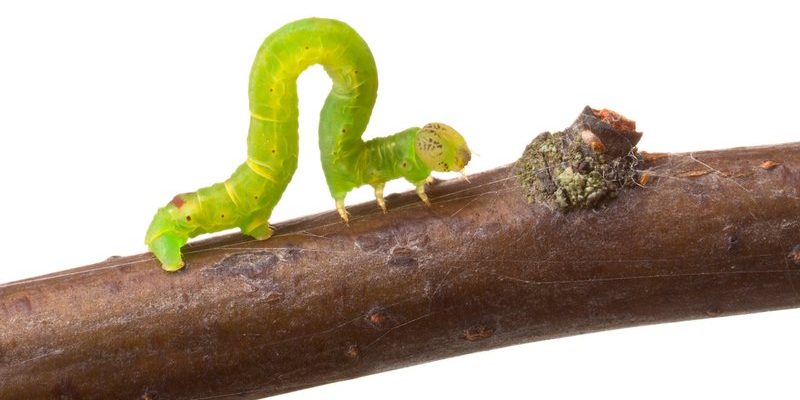
Inchworms, also known as measuring worms, are actually the larvae of moths. They get their name from their distinctive way of moving—by “inching” along on their bellies, which can be pretty entertaining to watch. However, their favorite meal is your lovely garden plants. So, the real question is: do they pose a threat? Let’s dig deeper into this topic and unravel the truth about inchworms and their impact on ornamental plants.
What Are Inchworms?
Inchworms belong mostly to the Geometridae family. They usually have a green or brown coloration that helps them blend in with leaves. This camouflage can make them tricky to spot, especially when they’re busy devouring your plants! They are typically in their larval stage for a few weeks before transforming into moths, often appearing in spring or early summer.
You might be wondering how these little critters end up in your garden. Well, inchworms generally hatch from tiny eggs laid by adult moths on or near host plants. As they grow, they’ll shed their skins multiple times, continuing to feed on foliage throughout their larval stage. Their diet often includes a variety of ornamental plants, making it essential for any gardener to keep an eye out for them.
How Do Inchworms Damage Plants?
So, what exactly do inchworms do to your precious plants? Primarily, they feed on the leaves. This might sound harmless, but it can lead to several problems for your ornamental plants. First off, they can cause significant defoliation. Picture your favorite plant losing all its leaves—yikes! A few hungry inchworms can quickly strip a plant of its foliage, weakening it and making it more vulnerable to diseases.
In addition to defoliation, inchworm damage can lead to stunted growth. When a plant loses its leaves, it can’t photosynthesize effectively, which means it can’t produce the energy it needs to grow. This is particularly concerning for young plants that are still developing their root systems. Stress from inchworm feeding can hinder their ability to thrive, leaving them looking less vibrant than they should.
Identifying Inchworm Infestations
You might now be considering how to recognize an inchworm infestation in your garden. A great starting point is to regularly inspect your plants, and look for chewed leaves or missing plant parts. Inchworms tend to munch on leaves from the edges inward, so check for those telltale signs. Since they often camouflage well, you may need to look closely.
Another indicator is the presence of tiny droppings, which are small, rounded, and can be found on or near the plants they’ve targeted. If you see these, it’s a good sign that your garden might have some unwanted guests. Plus, keep an eye out for any bent or curled leaves, which can also signal an infestation.
How to Control Inchworms in Your Garden
Now that you know how troublesome inchworms can be, let’s talk about control methods to protect your plants. First and foremost, manual removal can be effective. If you spot an inchworm, simply pluck it off and relocate it away from your garden. Just remember to wear gloves—these little guys can wriggle!
You can also use natural predators to help manage inchworm populations. Birds, such as chickadees and wrens, love to snack on inchworms. To attract these helpful allies, consider adding birdhouses or feeders to your garden. If your infestation is more severe, you might want to explore organic insecticides that target caterpillars. These products can be a safer option for your plants, pets, and the environment.
Preventing Inchworm Infestations
As the saying goes, “An ounce of prevention is worth a pound of cure.” To keep inchworms at bay, there are several strategies you can embrace. First, maintaining a healthy garden ecosystem is key. Make sure your plants are healthy and thriving, as strong plants are less susceptible to pests.
Another great tip is to rotate your crops. If you’ve grown the same ornamental plants in the same spot for years, inchworms (and other pests) can build up in that area. By rotating plants, you disrupt their lifecycle and make it harder for them to return.
Lastly, consider using floating row covers during early spring when inchworm populations are on the rise. These lightweight fabrics can help shield your plants from potential infestations while still allowing sunlight and moisture to penetrate.
Inchworms can indeed affect ornamental garden plants, from causing leaf damage to stunted growth. Though they may seem like tiny nuisances, keeping your garden in tip-top shape is essential to warding off their hungry mouths. By staying vigilant, recognizing infestations early, and employing preventative measures, you can enjoy a vibrant and flourishing garden.
Remember, a healthy garden thrives on care and attention. And while inchworms might be part of the ecosystem, they don’t have to take over your beautiful ornamental plants. So grab your gardening gloves, and let’s keep those invasions at bay!

